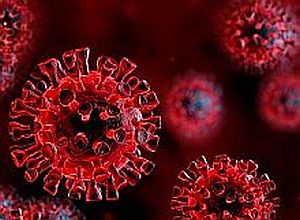Two recent studies highlight the role of airborne spread of COVID-19 and the importance of efficient ventilation systems. One study found that patients can exhale millions of viral RNA particles per hour in the early stages of disease, and the second tied an outbreak affecting 81% of residents and 50% of healthcare workers at a Dutch nursing home to inadequate ventilation.
In the first study, researchers at the College of Environmental Sciences and Engineering, Peking University, Beijing, China analysed exhaled breath samples from 49 COVID-19 patients from 10 countries, 4 hospitalised patients without COVID-19, and 15 healthy people from Beijing using reverse transcription polymerase chain reaction. They also tested 26 air samples and 242 surface swabs from quarantine hotels, hospitals, and personal belongings.
Of the exhaled breath samples, 26.9% were positive for RNA from SARS-CoV-2, the virus that causes COVID-19, while 3.8% of air samples and 5.4% of surface swabs tested positive. The viral RNA breath emission rate was highest in the first stages of disease.
Breath samples from two patients were positive for coronavirus RNA, but surface swabs of their cell phones, hands, and toilets were negative. Viral RNA was also detected on an air ventilation duct below another patient's bed.
Among the 242 surface swabs, viral RNA was found most often on toilet bowls (16.7%); floors (12.5%); patient hands, pillowcases, mobile phones, and computer keyboards (4.0%); and surfaces that healthcare staff touched (2.6%). But only 2 of 22 mobile phone surface samples tested positive for viral RNA, and all object handles were negative.
The authors said that the viral RNA breath emission rate appears to vary based on factors such as patient activity level and disease stage and may be affected by age. Viral RNA emission was sporadic in at least one patient, whose samples generated different test results on different days.
The findings support previous studies that concluded that COVID-19 is mostly likely spread by aerosols rather than large respiratory droplets or contaminated surfaces, the researchers said. Such studies have documented airborne spread in semi-enclosed environments such as a choir practice in Washington state and a restaurant in Guangzhou, China.
"Though we did not study infectivity or transmission probability and other virus releasing activities such as talking and singing, our study demonstrates that exhaled breath emission plays an important role in SARS-CoV-2 emission into the air, which could have contributed greatly to the observed airborne cluster infections and the ongoing pandemic," the authors wrote.
In the second study, researchers at the Franciscus Gasthuis & Vlietland Hospital, Rotterdam and University Medical Centre Utrecht, in the Netherlands, wrote a research letter documenting a COVID-19 outbreak that sickened 17 residents and 17 healthcare staff in one of seven wards in a nursing home for people with psychiatric or behavioural conditions. None of the 95 residents or 106 healthcare staff in the other six wards tested positive.
The authors noted that the Netherlands was experiencing a low prevalence of COVID-19 the week of the outbreak, with only 493 of that country's residents testing positive, compared with 8,391 cases during the most intense week of the outbreak in April.
To prevent coronavirus transmission, all healthcare workers were assigned to specific wards and required to wear surgical masks during patient care starting Apr 26. Residents lived in individual rooms and spent part of each day in shared living rooms; some residents were mobile.
Suspecting that the ventilation system of the affected ward could have contributed to the outbreak, investigators found that an energy-efficient system had been installed in which indoor air was refreshed only when indoor carbon dioxide (CO2) concentrations detected elevated levels. If CO2 levels didn't exceed a certain threshold, unfiltered indoor air was simply recirculated throughout the ward. In contrast, the six unaffected wards were refreshed regularly with outside air.
The researchers noted that low CO2 levels produced by inactive patients may have led to stale air in the affected ward, which was cooled by two air conditioning units that also recirculated the air in the shared living areas. SARS-CoV-2 RNA was found in dust on the mesh dust filter of living room air conditioners and in four filters from three of eight ventilation units.
"We advise that prevention of COVID-19 transmission should take into account the possibility of aerosol transmission in healthcare facilities and other buildings where ventilation systems recirculate unfiltered inside air," the authors of the study wrote.
Abstract 1
Exhaled breath samples had the highest positive rate (26.9%, n=52), followed by surface swabs (5.4%, n=242), and air samples (3.8%, n=26). COVID-19 patients recruited in Beijing exhaled millions of SARS-CoV-2 RNA copies into the air per hour. Exhaled breath emission may play an important role in the COVID-19 transmission.
Authors
Jianxin Ma, Xiao Qi, Haoxuan Chen, Xinyue Li, Zheng Zhang, Haibin Wang, Lingli Sun, Lu Zhang, Jiazhen Guo, Lidia Morawska, Sergey A Grinshpun, Pratim Biswas, Richard C Flagan, Maosheng Yao
Abstract 2
No research letter abstract available
Authors
Peter de Man, Sunita Paltansing, David S Y Ong, Norbert Vaessen, Gerard van Nielen, Johannes G M Koeleman
[link url="https://www.cidrap.umn.edu/news-perspective/2020/08/yet-more-data-support-covid-19-aerosol-transmission?utm_source=Global+Health+NOW+Main+List&utm_campaign=4164dd0efc-EMAIL_CAMPAIGN_2020_08_31_02_48&utm_medium=email&utm_term=0_8d0d062dbd-4164dd0efc-2834545"]CIDRAP material[/link]
[link url="https://academic.oup.com/cid/advance-article/doi/10.1093/cid/ciaa1283/5898624"]Clinical Infectious Diseases abstract 1[/link]
[link url="https://academic.oup.com/cid/advance-article/doi/10.1093/cid/ciaa1270/5898577"]Clinical Infectious Diseases research letter[/link]

